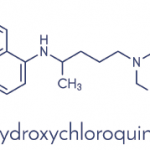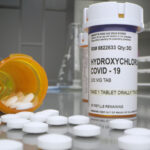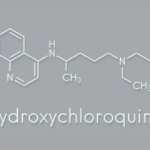Hydroxychloroquine (HCQ) therapy may effectively manage systemic lupus erythematosus (SLE) in many patients, but that doesn’t mean patients will take it as often as they should. In fact, results from a recently published study found that about half of SLE patients were not adherent.1
The study was led by Lucy H. Liu, MD, MPH, a rheumatology fellow at the University of California, San Francisco, who at the time of the study was an internal medicine resident at Kaiser Permanente Oakland Medical Center. The researchers acknowledged that poor adherence to HCQ is often hard to understand. The fear of adverse effects, patient perceptions of drug efficacy, depression and complex medication regimens all may play a role.
The Study
For their study, Dr. Liu and co-researchers decided to measure the World Health Organization’s (WHO) five dimensions of adherence for chronic conditions:2
- Socioeconomic status, which refers to wealth, education and occupation (and can also reflect health literacy and barriers to care);
- Patient-related factors, such as beliefs and attitude regarding treatment, which may be influenced by age and culture;
- Condition-related factors, such as co-morbidities, functional limitations and overall disease complexity;
- Therapy-related factors, which can include medication regimen complexity; and
- Health system factors, including integration, care coordination and access to care.
This retrospective study included 1,956 adult patients who were seen at Kaiser Permanente Northern California from 2006–2014, all of whom had SLE and two or more consecutive prescriptions for HCQ. Ninety percent of the study population was female, and the mean age was 47.
Researchers used the medication possession ratio as the primary outcome. The medication possession ratio is a well-established measure of medication adherence in electronic database research and is defined as the number of days of dispensed medication divided by the total days of follow-up. Researchers also stratified patients by adherence less than 80% or greater than 80%. Electronic medical records and 2010 census data were used to obtain predictor variables.
By using Kaiser Permanente patients, researchers could analyze patients who had easy access to its pharmacies and often had a fixed drug co-pay of $5 to $20. The study excluded patients with contraindications to HCQ, such as retinopathy, toxic maculopathy and allergy.
The Results

Gustavo Frazao / shutterstock.com
Among the patients included, only 58% had 80% or higher HCQ adherence. Of those with adherence of 80% or higher, the mean adherence was 96%. For those with adherence lower than 80%, the mean adherence was 51%.
After an adjusted analysis, an age of 65–89 years, white race, an estimated glomerular filtration rate of 60–89 mL/min/1.73 m2 (vs. 90 mL/min/1.73 m2 or higher) and a larger number of rheumatologist visits in the year before baseline (three visits or more) were all associated with better adherence. More frequent visits are a marker of SLE severity, the researchers pointed out.
Mycophenolate mofetil use was somewhat inversely associated with the odds of adherence, but prednisone and angiotensin-converting enzyme-inhibitor use were not. Healthcare-system factors did not appear to affect adherence.
The median household income was $78,710 in the adherent group as compared with $77,425 in the non-adherent group. “None of the four variables measuring socioeconomic status differed between adherent and non-adherent patients,” Dr. Liu and co-researchers wrote. Gender and language also were not associated with adherence.
Patient education about the value of HCQ, online interactions, social media HCQ group participation and visits to the rheumatologist all may help improve adherence, the researchers wrote.


